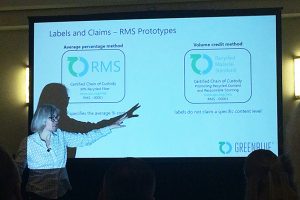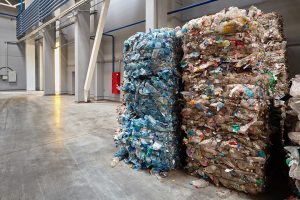 Scrap plastic shipments from the U.S. declined from 122 million pounds in January to 120 million pounds in February. That February volume was the lowest single month of plastic exports since December 2003.
Scrap plastic shipments from the U.S. declined from 122 million pounds in January to 120 million pounds in February. That February volume was the lowest single month of plastic exports since December 2003.

 Scrap plastic shipments from the U.S. declined from 122 million pounds in January to 120 million pounds in February. That February volume was the lowest single month of plastic exports since December 2003.
Scrap plastic shipments from the U.S. declined from 122 million pounds in January to 120 million pounds in February. That February volume was the lowest single month of plastic exports since December 2003.
 Scrap plastic traders continue to circumvent import restrictions in one Southeast Asian country by labeling recovered plastic as another type of commodity.
Scrap plastic traders continue to circumvent import restrictions in one Southeast Asian country by labeling recovered plastic as another type of commodity.
 The price of natural HDPE has continued to drop and now sits well below its position a year ago, but recovered PET values have remained constant.
The price of natural HDPE has continued to drop and now sits well below its position a year ago, but recovered PET values have remained constant.
![]()
Last year, 45 producers reported selling plastic beverage containers to California consumers. Of those businesses, 13 said their bottles incorporated some amount of recycled plastic.

GreenBlue’s Laura Thompson presents at SPC Impact.
Hundreds of packaging stakeholders came together last week in Seattle to talk sustainability. And recycling factored into the conversation in a number of ways.
 The Vietnamese government has reiterated its plan to phase out scrap plastic imports altogether, noting all scrap plastic will be barred beginning in 2025.
The Vietnamese government has reiterated its plan to phase out scrap plastic imports altogether, noting all scrap plastic will be barred beginning in 2025.
 The U.S. exported 121.5 million pounds of scrap plastic in January, marking the lowest single-month volume since January 2005, trade records show.
The U.S. exported 121.5 million pounds of scrap plastic in January, marking the lowest single-month volume since January 2005, trade records show.
 For decades, an index has reported prices for recovered plastics in Canada’s most populous province. The group behind the sheet recently evaluated how it compares with other market reports.
For decades, an index has reported prices for recovered plastics in Canada’s most populous province. The group behind the sheet recently evaluated how it compares with other market reports.
 Industry stakeholders are pushing back against revived national media focus on the pressures facing U.S. recycling markets. Although those stresses are real, experts emphasize there is another side to the story.
Industry stakeholders are pushing back against revived national media focus on the pressures facing U.S. recycling markets. Although those stresses are real, experts emphasize there is another side to the story.

Chris Cui on stage at the 2019 Plastics Recycling Conference and Trade Show.
Although the recycling relationship between the U.S. and China was hampered by scrap material restrictions, an expert says companies in both countries can help each other.
